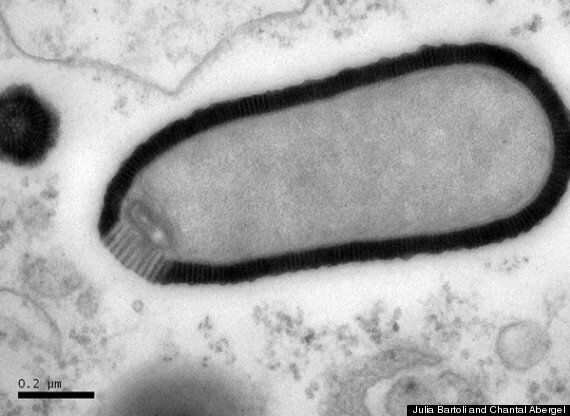It sounds like the plot of a horror film... But it's almost certainly fine.
Scientists have re-awoken an ancient virus which lay frozen in Siberian ice for more than 30,000 years.
The virus was discovered locked in permafrost by a team of French researchers, who published their findings in the Proceedings of the National Academy of Sciences.

The virus ('Pithovirus sibericum') was found buried beneath 100 feet of permafrost, or frozen ground, the team said.
And yes, it's infectious. Luckily, it's only able to infect amoebas, mainly because it is so big. Pithovirus sibericum is a type of 'giant' virus, which is so large that unlike most viruses it can be seen under a microscope.
In fact this particular specimen - 1.5 micrometres long - is the largest ever discovered.
Professor Jean-Michel Claverie, from the National Centre of Scientific Research at the University of Aix-Marseille, said "this is the first time we've seen a virus that's still infectious after this length of time".
And while this virus poses no danger to humans or animals, it is likely that other - potentially more contagious - viruses will be unlocked as the Siberian landscape continues to thaw..
Claverie told the BBC that mining, drilling and climate change pose a serious risk of reawakening any number of infectious microbes - including, perhaps, smallpox.
"It is a recipe for disaster. If you start having industrial explorations, people will start to move around the deep permafrost layers. Through mining and drilling, those old layers will be penetrated and this is where the danger is coming from."
"By going deeper we may reactivate the possibility that smallpox could become again a disease of humans in modern times."